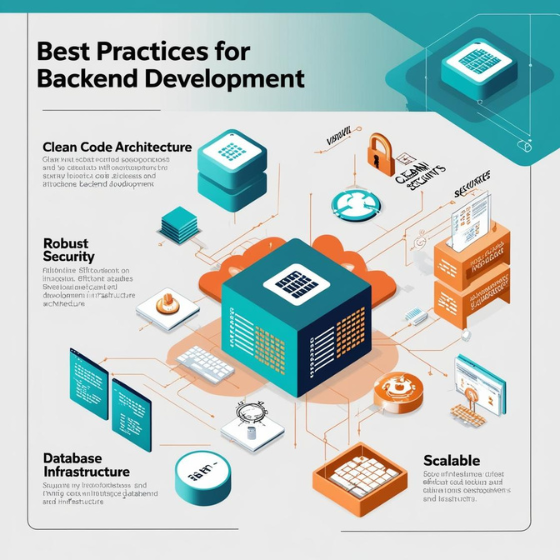Node.js has become a popular choice for building scalable applications due to its non-blocking, event-driven architecture and efficient handling of concurrent connections. Its ability to manage numerous simultaneous connections with minimal overhead makes it ideal for developing high-performance, scalable applications. This blog will guide you through the principles and best practices for developing scalable applications using Node.js.
Understanding Node.js Architecture
Non-Blocking I/O Model
Node.js operates on a single-threaded, event-driven architecture, which allows it to handle multiple I/O operations without blocking the execution of other tasks. This non-blocking I/O model ensures that the server can process multiple requests concurrently, improving overall efficiency and scalability. Unlike traditional multi-threaded models that create a new thread for each request, Node.js uses a single thread to handle multiple operations asynchronously.
Event Loop
The event loop is a core component of Node.js that enables its non-blocking nature. It continuously monitors for events and handles them as they occur, allowing the server to process requests and perform operations efficiently. By delegating time-consuming tasks to the event loop, Node.js can maintain high performance and responsiveness even under heavy load.
Designing for Scalability
Modular Architecture
A modular architecture helps in organizing and managing code more efficiently, which is crucial for scalability. By breaking down an application into smaller, manageable modules, you can improve maintainability and ease of scaling. Node.js’s module system allows you to create reusable components and services, making it easier to manage and scale your application.
Microservices Approach
Adopting a microservices architecture can significantly enhance scalability. In a microservices architecture, an application is divided into smaller, independent services that communicate over a network. Each microservice handles a specific functionality and can be scaled independently based on demand. Node.js is well-suited for building microservices due to its lightweight nature and efficient handling of asynchronous operations.
Load Balancing
Load balancing is a technique used to distribute incoming network traffic across multiple servers to ensure no single server becomes overwhelmed. Node.js can be used in conjunction with load balancers like Nginx or HAProxy to distribute the load effectively. By balancing the traffic, you can improve the performance and scalability of your application, ensuring that it can handle a large number of simultaneous users.
Optimizing Performance
Caching Strategies
Implementing caching strategies can significantly enhance the performance of your Node.js application. Caching involves storing frequently accessed data in memory to reduce the time spent on database queries or computations. Techniques like in-memory caching, HTTP caching, and CDN (Content Delivery Network) caching can help improve response times and reduce server load.
Asynchronous Operations
Leveraging asynchronous operations is a key advantage of Node.js. By using asynchronous methods for file I/O, database queries, and network requests, you can avoid blocking the event loop and ensure that the application remains responsive. Utilizing Node.js’s asynchronous capabilities allows you to handle multiple requests concurrently without impacting performance.
Efficient Database Design
Efficient database design is crucial for scalability. When using Node.js with databases, consider implementing techniques like indexing, query optimization, and database partitioning to improve performance. Additionally, choosing a database that aligns with your application’s needs—whether it’s a SQL database for complex queries or a NoSQL database for high scalability—can impact overall efficiency.
Scaling Strategies
Horizontal Scaling
Horizontal scaling involves adding more servers or instances to handle increased load. Node.js supports horizontal scaling through clustering, which allows you to run multiple instances of your application across different CPU cores or servers. By distributing the load across multiple instances, you can achieve better performance and handle higher traffic volumes.
Vertical Scaling
Vertical scaling involves increasing the resources (CPU, RAM, etc.) of a single server to handle more load. While vertical scaling can provide immediate improvements in performance, it has its limits and may not be as effective as horizontal scaling for handling very high traffic. However, for applications with moderate traffic, vertical scaling can be a straightforward way to improve scalability.
Auto-Scaling
Auto-scaling is a dynamic approach to scaling applications based on current demand. Cloud platforms like AWS and Azure offer auto-scaling features that automatically adjust the number of instances based on traffic patterns and resource usage. This ensures that your application can handle varying levels of traffic without manual intervention.
Handling Real-Time Data
WebSockets
WebSockets provide a full-duplex communication channel between the client and server, allowing for real-time data exchange. Node.js’s support for WebSockets enables you to build applications that require real-time updates, such as chat applications, live notifications, and online gaming. By maintaining a persistent connection, WebSockets ensure that data is transmitted instantly, enhancing user experience.
Streaming Data
Streaming data allows you to process and handle data in chunks as it arrives, rather than waiting for the entire dataset. Node.js’s support for streaming data is beneficial for applications that deal with large volumes of data, such as video streaming platforms or data analytics tools. By processing data streams efficiently, you can reduce latency and improve performance.
Security Considerations
Data Validation and Sanitization
Ensuring the security of your Node.js application involves validating and sanitizing user inputs to prevent malicious attacks such as SQL injection and cross-site scripting (XSS). Implement input validation techniques to ensure that only valid data is processed by your application. Additionally, use libraries and frameworks that offer built-in security features to enhance protection.
Authentication and Authorization
Implementing robust authentication and authorization mechanisms is crucial for securing your application. Use technologies like JWT (JSON Web Tokens) or OAuth for secure authentication, and implement role-based access controls to restrict access to sensitive areas of your application. Regularly review and update your security practices to address potential vulnerabilities.
Monitoring and Maintenance
Performance Monitoring
Monitoring the performance of your Node.js application is essential for identifying bottlenecks and optimizing resource usage. Tools like New Relic, Datadog, and Prometheus provide real-time insights into application performance, allowing you to track metrics such as response times, error rates, and resource consumption. Regular monitoring helps you maintain high performance and quickly address issues.
Error Handling and Logging
Implementing effective error handling and logging practices helps you track and resolve issues promptly. Use logging libraries and services to record application errors, warnings, and performance metrics. Analyzing logs can provide valuable insights into application behavior and help you troubleshoot problems efficiently.
Conclusion
Node.js offers a robust and scalable platform for developing high-performance applications. By understanding its architecture, designing for scalability, optimizing performance, and implementing effective scaling strategies, you can build applications that handle high traffic and deliver an exceptional user experience. Additionally, focusing on security, real-time data handling, and monitoring ensures that your Node.js applications remain reliable and efficient. As businesses continue to embrace digital transformation, Node.js will remain a valuable tool for developing scalable and innovative solutions.







